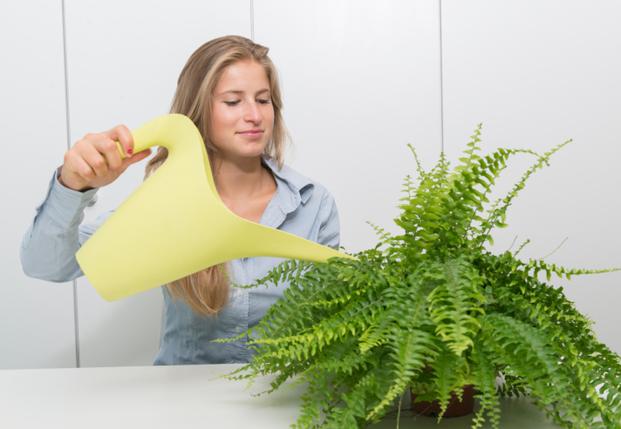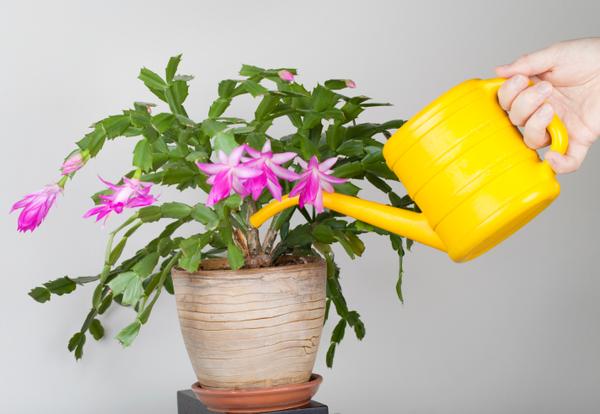 A number of our ornamental plants, which keep well indoors, are native to the periodically dry regions of the tropics. The period with missing soil- and humidity leads to growth dormancy, which, under our climatic conditions, usually falls in the winter months with reduced light intensity and low temperatures. The water absorbed by the roots and released again through the stomata of the leaves flows through the plant as a constant stream of water. The water not only gives the plant parts their normal shape and freshness, but it also serves to absorb minerals and transport nutrients to the places where they are used. The plant is capable of the substances needed to build up its body (certain chemical elements) only dissolved in water. The high water consumption is explained by the fact, that this mineral uptake in only a very low concentration of the solution (von 0,1 to 0,2%) can be done. However, high water consumption does not always equate to high mineral intake, because the plant has to absorb a lot of soil water with a low concentration of minerals if there is a poor supply of nutrients, to meet their nutritional needs. In general, water consumption increases when there is a lack of nutrients. On the other hand, abundant minerals cannot be used, when there is a lack of water to absorb and transport them. These connections between water- and mineral supply must be taken into account, if we want to ensure that houseplants thrive with an appropriately coordinated "nutrition"..
A number of our ornamental plants, which keep well indoors, are native to the periodically dry regions of the tropics. The period with missing soil- and humidity leads to growth dormancy, which, under our climatic conditions, usually falls in the winter months with reduced light intensity and low temperatures. The water absorbed by the roots and released again through the stomata of the leaves flows through the plant as a constant stream of water. The water not only gives the plant parts their normal shape and freshness, but it also serves to absorb minerals and transport nutrients to the places where they are used. The plant is capable of the substances needed to build up its body (certain chemical elements) only dissolved in water. The high water consumption is explained by the fact, that this mineral uptake in only a very low concentration of the solution (von 0,1 to 0,2%) can be done. However, high water consumption does not always equate to high mineral intake, because the plant has to absorb a lot of soil water with a low concentration of minerals if there is a poor supply of nutrients, to meet their nutritional needs. In general, water consumption increases when there is a lack of nutrients. On the other hand, abundant minerals cannot be used, when there is a lack of water to absorb and transport them. These connections between water- and mineral supply must be taken into account, if we want to ensure that houseplants thrive with an appropriately coordinated "nutrition"..
The growth factor water plays a special role in soilless cultivation. Whereas in soil culture, the soil serves as the plant's "breeding ground"., from which it takes water and nutrients, these two growth factors are presented in soilless culture in the form of a nutrient solution.
Since the soilless culture is becoming increasingly widespread in the care of indoor plants, This procedure is explained in more detail in a special section.
